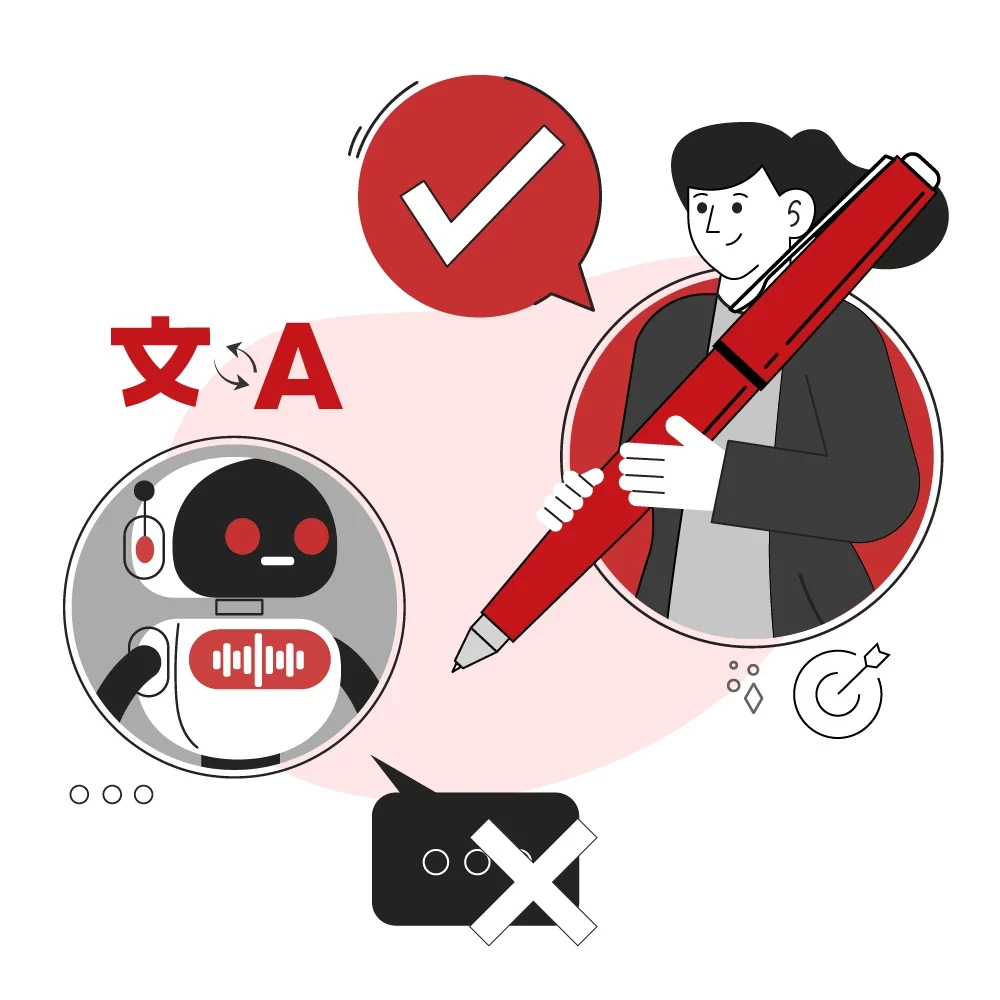Machine Translation Post-Editing Services
Refined Translations for Global Impact


Get a Free Quote for Your Business
Order a free quote by filling the form below
Fast Machine Translation Post Editing Services
Machine translation often produces culturally insensitive expressions. At AsiaLocalize, we deliver professional MT post-editing services that improve the machine-generated content to resonate with your target audience.
We have skilled machine translation post-editors who are native speakers with extensive subject-matter expertise. They use advanced tools that ensure consistency and quality to meet high standards and suit your audience.


Errors Our Post-Editors Look For
Our skilled editors carefully correct a variety of machine errors for accurate and suitable translations. We cover a broad range of issues, such as:
- Accuracy, mistranslation, and inconsistency.
- Readability, style, and tone.
- Cultural appropriateness and efficiency.
Types of Machine Translation Post-Editing

Light Post-Editing
Our light post-editing service ensures quality translations with few edits. It fixes typos, spelling errors, and grammatical mistakes. This solution suits:
- Real-time translation projects, such as sports commentary.
- News reporting for fast information delivery.
- Literal translations, including product specifications.

Standard Post-Editing
It is the most customizable form of machine translation editing for projects that require a balance between speed and quality. We apply standard post-editing to:
- Projects with short deadlines, such as weekly video subtitles.
- News reporting projects requiring speed and accuracy.
- Statements and announcements for accurate translations.
- Social media posts for fast responses with wording checks.

Full Post-Editing
We provide full post-editing that prioritizes quality that ensures both translation accuracy and adherence to strict editorial standards. This service for:
- Technical translations, such as financial reports.
- Actionable content, including web pages and CTAs.
- News/blog publishing (e.g., translating articles).
- Important visual content, like infographics and graphs.
Our Achievements
Trusted by the world’s leading companies











Smart Editing for Accurate Translations
Trust our team to refine your machine-generated translations. We specialize in post-editing to deliver clear and accurate content in over 120 languages.
Frequently Asked Questions
When Is It Good To Use Machine Translation Post-Editing?
Machine translation post-editing helps save time on large projects, especially for technical translations. Adding the human touch can enhance quality.
How Does Machine Translation Post-Editing Work?
Translators draft content using automated tools and translation memory, then refine it to humanize the message and make it appeal to your audience.
